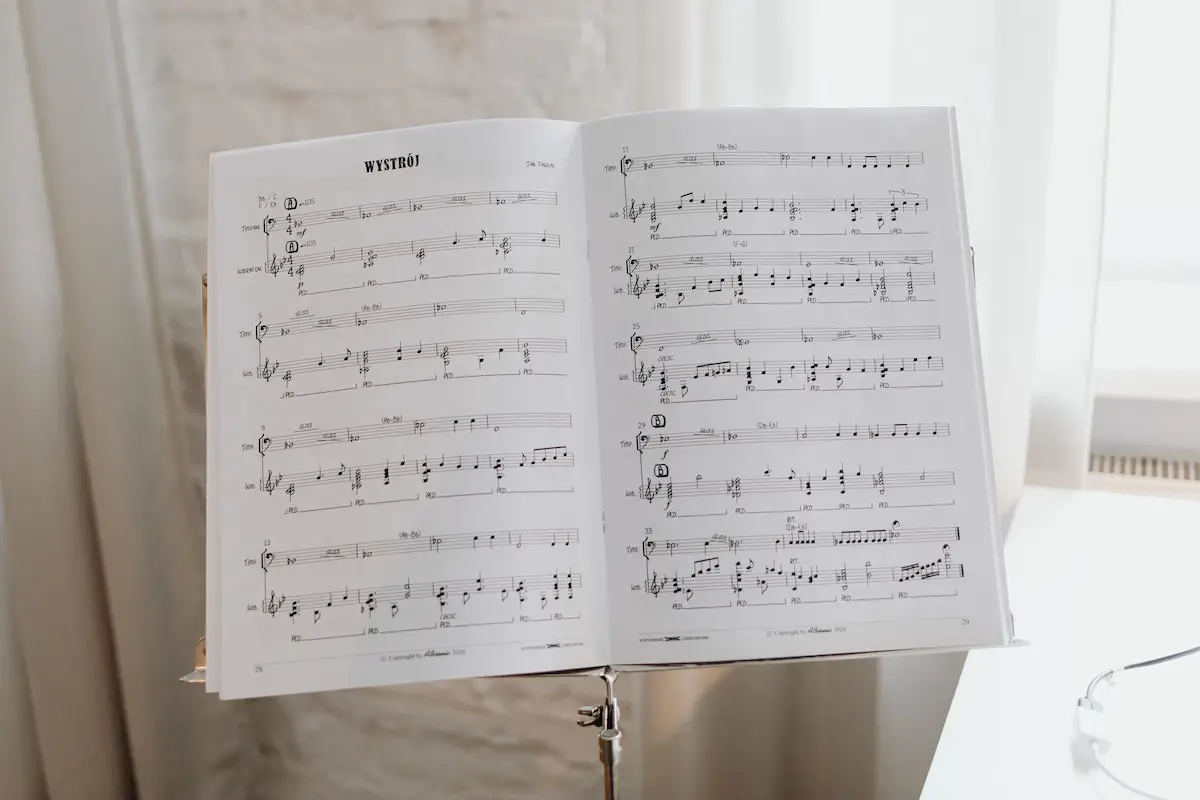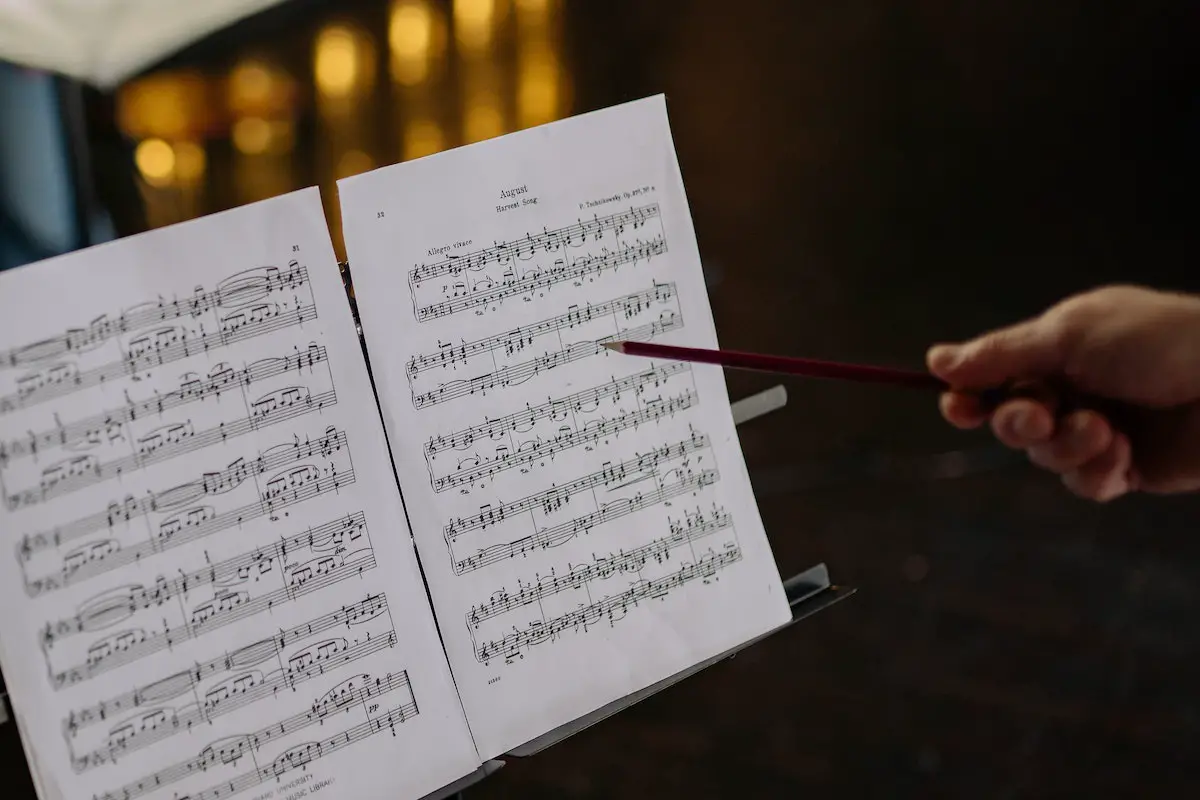Music, at its core, is a play of patterns and contrasts, a language that speaks through the union of predictability and surprise. One of the most enduring and enchanting forms this takes is the ternary form—a structure as rhythmic and familiar as the heartbeat of a waltz. Delineated into three parts and denoted as ABA, ternary form offers listeners a musical journey that begins with an introduction, ventures into contrast, and culminates with a return to the familiar.
What is ternary form? Ternary form is a musical structure divided into three distinct sections, with the first and last sections being identical, creating an A-B-A format. It offers a sense of unity and balance while introducing variation and contrast in the middle section.
What is ternary form?
Ternary form is a musical structure divided into three distinct sections, typically labeled as A, B, and A again. It’s characterized by the repetition of the initial section, which provides a sense of familiarity and unity throughout the piece. This form allows composers to create engaging and dynamic compositions by introducing a contrasting middle section.

Ternary form offers a unique balance between repetition and contrast, giving each section its own identity while keeping a cohesive thread running through the entire composition. The repetition of the A section delivers a sense of stability. In contrast, the contrasting B section introduces new melodies, harmonies, or even a change in key, adding excitement and variety to the piece.
AKAI Professional MPK Mini MK3

AKAI Professional MPK Mini MK3
How does ternary form work?
In ternary form, the A section serves as the main theme or melody that sets the foundation for the composition. The B section in the middle provides a fresh perspective by introducing new material that contrasts with the A section. This can be achieved by changing the key, altering the rhythm, or exploring different harmonies. Finally, the A section returns, creating a satisfying musical journey that comes full circle.
What are the two types of ternary form?
There are two primary types of ternary form. Both of these forms are fundamental structures in Western classical music, but they can also be found in various other musical traditions and genres.
1. Simple ternary form (ABA)
The simple ternary form is often used in shorter compositions or individual sections of larger works.
- A Section: This is the first and main thematic material.
- B Section: Introduces a contrasting theme or idea. Often, this section can move to a different key, providing contrast in mood, rhythm, harmony, or melody.
- A Section: This is a return of the initial A section material, often with little to no change, though sometimes with variation.
2. Compound ternary (or Trio Form)
In compound ternary form, the A or B sections (or both) are often themselves in a binary or ternary form, thus making the overall structure more complex. This form is commonly found in classical dance movements, like minuets, scherzos, and marches.
- A Section: This section might be in a binary (AB) or a ternary form.
- B Section (or Trio): As with the simple ternary, this section introduces a contrast. In dances like the minuet or scherzo, this Trio section is often in a simpler texture and contrasting key.
- A Section: The return of the initial material, which can sometimes be followed by a coda or concluding passage.
What are examples of ternary form?
To truly grasp the beauty of ternary form, let’s explore some notable examples:
- Mozart – “Andante in E-Flat Major”: Mozart’s composition showcases the elegance of ternary Form, with its captivating A section, contrasting B section, and the return of the A section to conclude the piece.
- Chopin – “Raindrop” Prelude, Op. 28 No. 15: This iconic composition follows Ternary Form, captivating listeners with its emotional journey and the interplay between the contrasting B section and the recurring A section.
- Rachmaninoff – “Prelude in C-Sharp Minor”, Op. 3 No. 2: Rachmaninoff’s masterpiece beautifully demonstrates the power of Ternary Form, taking listeners on a dramatic musical adventure through its sections.
How does ternary form compare to other musical forms?
When exploring different musical forms, it’s natural to wonder how Ternary Form compares to others. Let’s take a closer look at how this three-part structure stands out in comparison:
Binary Form
Binary Form, as the name suggests, consists of two sections (A and B). Unlike Ternary Form, Binary Form does not include a repetition of the initial section. Instead, it follows a more straightforward and concise structure, with two distinct parts. Ternary Form, on the other hand, adds depth and complexity by reintroducing the A section, creating a sense of familiarity and unity within the piece.

Rondo Form
Rondo Form, also known as ABACADA, is another common musical structure. In Rondo Form, the A section repeatedly returns after different contrasting sections (B, C, D, and so on). This creates a cyclical pattern, with the A section acting as a refrain. While both Rondo and Ternary Forms incorporate repetition, Ternary Form focuses on a specific A-B-A structure, while Rondo Form showcases a more varied and diverse pattern.
Sonata Form, often associated with classical music, is a more complex and multifaceted structure.
Sonata Form
Sonata Form, often associated with classical music, is a more complex and multifaceted structure. It consists of multiple sections, including exposition, development, and recapitulation. Sonata Form allows for extensive thematic exploration and modulation, whereas Ternary Form emphasizes the repetition of the A section. Sonata Form provides a broader canvas for musical development, while Ternary Form brings a distinct balance between repetition and contrast within its three-part structure.
What are some tips on incorporating ternary form in your composition?
If you’re a budding composer or musician looking to experiment with Ternary Form, here are some tips to get you started:
- Begin by crafting a strong and memorable A section that serves as the foundation of your composition.
- Create contrast in the B section by introducing new melodies, harmonies, or even a change in key.
- To maintain cohesion, ensure that the B section relates to the A section thematically or tonally while still providing a noticeable contrast.
- Allow the B section to explore different emotions or moods, providing a captivating journey for both you and your audience.
- Finally, bring your composition full circle by returning to the A section, creating a satisfying conclusion.
If you want even more great tips and information, check out the video below.
Frequently Asked Questions (FAQ)
Below are some of the commonly asked questions about ternary form in music.
Can ternary form be used in any genre of music?
Yes, Ternary Form can be utilized in various genres of music, including classical, jazz, pop, and more. Its flexible structure allows composers to adapt it to different styles while maintaining the essence of the form.
Is it necessary for the B section in ternary form to be in a different key from the A section?
No, the B section does not have to be in a different key from the A section in ternary form. While a key change adds a notable contrast, composers can achieve variation through other means, such as rhythm, harmonic progression, or melodic motifs.
Can Ternary Form be combined with other musical forms to create more complex compositions?
Absolutely! Ternary form can be combined with other musical forms to create intricate compositions. Composers often explore hybrid forms, such as ternary-rondo form or ternary-sonata form, to introduce additional layers and structures, enabling greater musical exploration.
Conclusion
And that, my friends, brings us to the end of our musical journey through Ternary Form. I hope you’ve enjoyed discovering the fascinating world of this three-part musical structure. Remember, whether you’re composing classical masterpieces, creating captivating pop melodies, or exploring the realms of jazz, ternary form offers a powerful tool to captivate listeners and express your musical ideas.
Will you be incorporating ternary form in your next composition? Let me know in the comments section below—I read and reply to every comment. If you found this article helpful, share it with a friend, and check out my full blog for more tips and tricks on music composition. Thanks for reading, and keep making beautiful music!)
Key Takeaways
This article covered the main aspects of the ternary form in music composition. Here are some key takeaways:
- Ternary Form consists of three sections: A, B, and A, bringing balance and contrast to compositions.
- The repetition of the A section creates familiarity and unity, while the B section introduces contrasting themes.
- Ternary Form can be used across various musical genres and can be combined with other forms for more complex compositions.
- Incorporating Ternary Form requires careful attention to maintain cohesion and explore creative possibilities.















